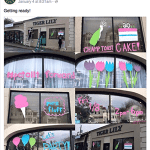
Monthly subscriptions make your flowers an integral part of your customers’ lives, which leads to word-of-mouth advertising.
What do Birchbox, Bark Box, Stitch Fix, Blue Apron, Choco Curb and Taste Trunk have in common?
They’re all players in the subscription box industry, delivering monthly (or weekly) surprises to customers—and healthy profit margins for their companies.
A panel of retail experts with the research firm Econsultancy explained why subscription services can be a boon for retailers’ bottom line:
- Predictability: Subscriptions give you a better idea how much product you need, what your shipping costs will be, what delivery destinations you’ll have, and your likely future income.
- Lower retention costs: Since your customers automatically “buy” from you each month, you don’t need to spend as much time and money marketing to them.
- Faster feedback: If a customer only orders from you once a year, he or she might not bother to address any problems or disappointments they have. However, if customers order every month, they quickly tell you about issues, which means you can swiftly iron out problems, improving your product and service to attract more customers and keep existing ones around longer.
- Amplification: If customers receive something from you every month, you become part of their life and they can amplify your brand via word of mouth and social media.
There’s enormous demand for monthly “pick me ups.” Hitwise, a marketing insights firm, reports that visits to subscription box websites increased by 3,000 percent between 2013 and 2016.
Laura Daluga, AIFD, has dozens of customers who’ve signed up for a monthly flower fix. “There’s one older man who refers to it as his ‘marriage maintenance package.’ Every month, his wife receives the same flowers she had in her wedding bouquet,” said the owner of Department of Floristry in Ann Arbor, Michigan.
Daluga put a “subscription services” category on her shop’s website and Facebook profile. She also advertises it on Instagram. “Instagram users care a lot about ‘lifestyle’ topics,” she said. “They’re the type of people who’d appreciate having flowers in their home regularly.”
To determine what to send her monthly subscribers, Daluga directs these customers to a webpage that includes a six-page questionnaire about their tastes (“most quit filling it out after the third page,” she said) and a sliding bar, where they can indicate their budget. It runs from $50 to $1 million. “This is obviously a ridiculous figure, but it’s just thrown out to show we can make it as big or small as they want,” Daluga said. “Most people move their cursor just a little to the right of the minimum price.”

